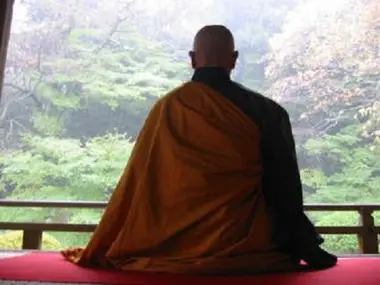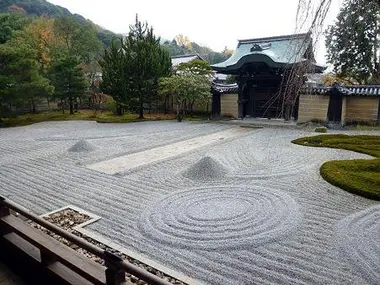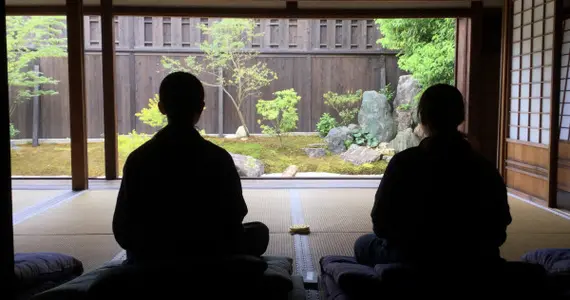Se ressourcer avec le zen 禅の恩恵
- Publié le : 17/12/2018
- Par : S.R.
- Youtube
Le zen, au calme
Le bouddhisme zen est connu à travers le monde pour certaines de ses pratiques permettant de se relaxer. Le nom propre est même devenu un adjectif dans le français usuel, synonyme de "calme" ! Le zen est ainsi une bonne solution pour ressourcer corps et esprits fatigués par la vie moderne.
La méditation
Le bouddhisme zen est connu pour sa pratique de la méditation. La plus connue est le zazen, qui se traduit littéralement par "la méditation assise". Le pratiquant peut adopter plusieurs positions (en lotus, en tailleur etc...) et durant 30 à 50 minutes méditer, avec un rythme de respiration régulier caractérisé par une longue expiration. Pendant la méditation, les idées et les images doivent passer dans le cerveau sans être analysées ou fixées. Habituellement pratiquée dans un dojo ou même dans un zendô, "salle de méditation", la méditation peut aussi être effectuée chez soi, face à un mur ! Des études médicales japonaises menées durant les années 60 montrent que la pratique permet d’atteindre un réel état de bien-être et de sérénité.
Se rendre dans un temple zen
Les temples zen, où beaucoup y pratiquent la méditation, sont aussi le lieu idéal pour se ressourcer. En effet, construits pour la méditation, ils sont en général situés dans des endroits permettant une plus grande solitude face au train expéditif de la vie moderne. Dans ces petits jardins zen, des îlots de mousse poussent parmi les sables, les rochers et les graviers. Volontairement abstraits et épurés, ces jardins invitent à désencombrer l’esprit et à retrouver une sérénité par l’abandon, ne serait-il que momentanément, des tracas du quotidien.
Lire aussi : Les temples zen de Kyoto
Adopter l’esthétique zen
Le zen n’est pas qu’une pratique, mais peut également être un mode de vie ponctuant nos journées. Dérivé du bouddhisme zen, le concept de "wabi-sabi" ("wabi" signifiant "simplicité fière, rustique" et "sabi" "la beauté venant avec l’âge") invite à observer le monde avec simplicité, à l’accepter et à l’aimer. Le wabi nous met en face de la modestie devant les grands phénomènes naturels alors que le sabi nous fait apprécier les objets simples, imparfaits et périssables. C'est cette esthétique que l'on retrouve dans l’art traditionnel (bonsaï) ou dans l’artisanat (céramique).














